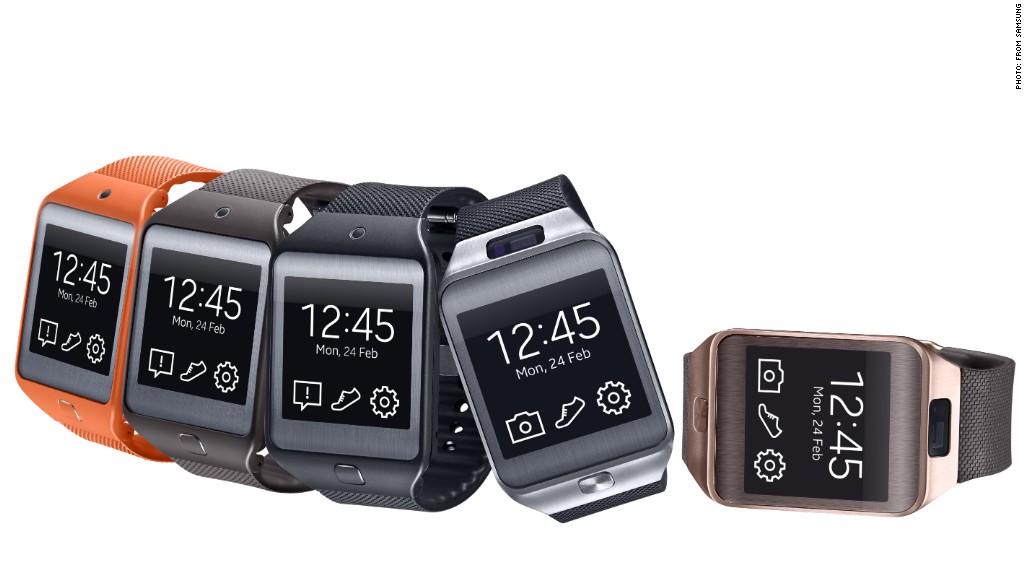
The Gear 2, Samsung's followup to its debut dud of a smartwatch, the Galaxy Gear, is here.
Planned for an April release, the redesigned watch -- along with a cheaper, camera-less counterpart, the Gear 2 Neo -- is slimmer, lighter and packs more processing power than its predecessor. Samsung (SSNLF) also added a new heart rate monitor for additional fitness tracking, and improved battery life to two or three days.
More interestingly, Samsung ditched Google's (GOOG) Android operating system in favor of Samsung's own Tizen OS, but says the watch will still be compatible with "dozens of Samsung Galaxy smartphones," which use Android.
Rumors prior to the formal announcement of the Gear 2 suggested that Samsung wanted the watch to run its own OS to attract the first wave of smartwatch and wearable developers, much like Apple (AAPL) was able to do with the iPhone.
Samsung hasn't said much about how the change in software affects the device in the short or long term, but chances are it's not going to make much of a difference either way: its flawed approach to the smartwatch seems intact.
Users will likely swipe and tap their way through the screens and menus of standalone smartwatch apps. There probably isn't any great leap in voice recognition or predictive/contextual delivery of information. Ultimately, those apps will do little more than direct users back to their smartphones, which offer an easier, more informative and more functional experience.
And that might still be the biggest flaw in Samsung's thinking. It's still viewing its Gear line as standalone devices, instead of as an extension of the smartphone, which they very much are. Rather than take the info being passed along from the various apps on a smartphone and integrating that into a singular interface, Samsung thinks that standalone apps will enhance the experience. The problem is that interacting with standalone apps on the original Galaxy Gear was a hassle.
Related: Waiting for Apple's iWatch?
Samsung can push its own Tizen OS and attempt to woo all the developers it wants, but it is putting the proverbial cart before the horse. If the core experience is flawed, no app in the world can save that.
Additionally, it adds an extra, unnecessary obstacle for any other Android hardware maker who would want its device to work with the watch. Samsung could have embraced Android as much as possible so that hardware makers and app developers had to do very little to work with the Gear smartwatch. Instead, both camps would now have to dedicate time and money to making their products work with the Gear 2.
Then again, Samsung seems OK only having the Gear work with its own smartphones.
Samsung's hardware changes to the Gear 2 seem like positive ones, but those changes only address the minor problems which plagued the original. Yes, it was big and clunky, but that didn't seem like the reason people were returning the device in droves. The lack of utility it served in people's lives was the likely culprit.
If changes to the Gear 2 software don't address many of the core, conceptual issues which plagued the Galaxy Gear -- limited utility and wonky interactions -- it could find itself again heading back to the drawing board for the Gear 3.

